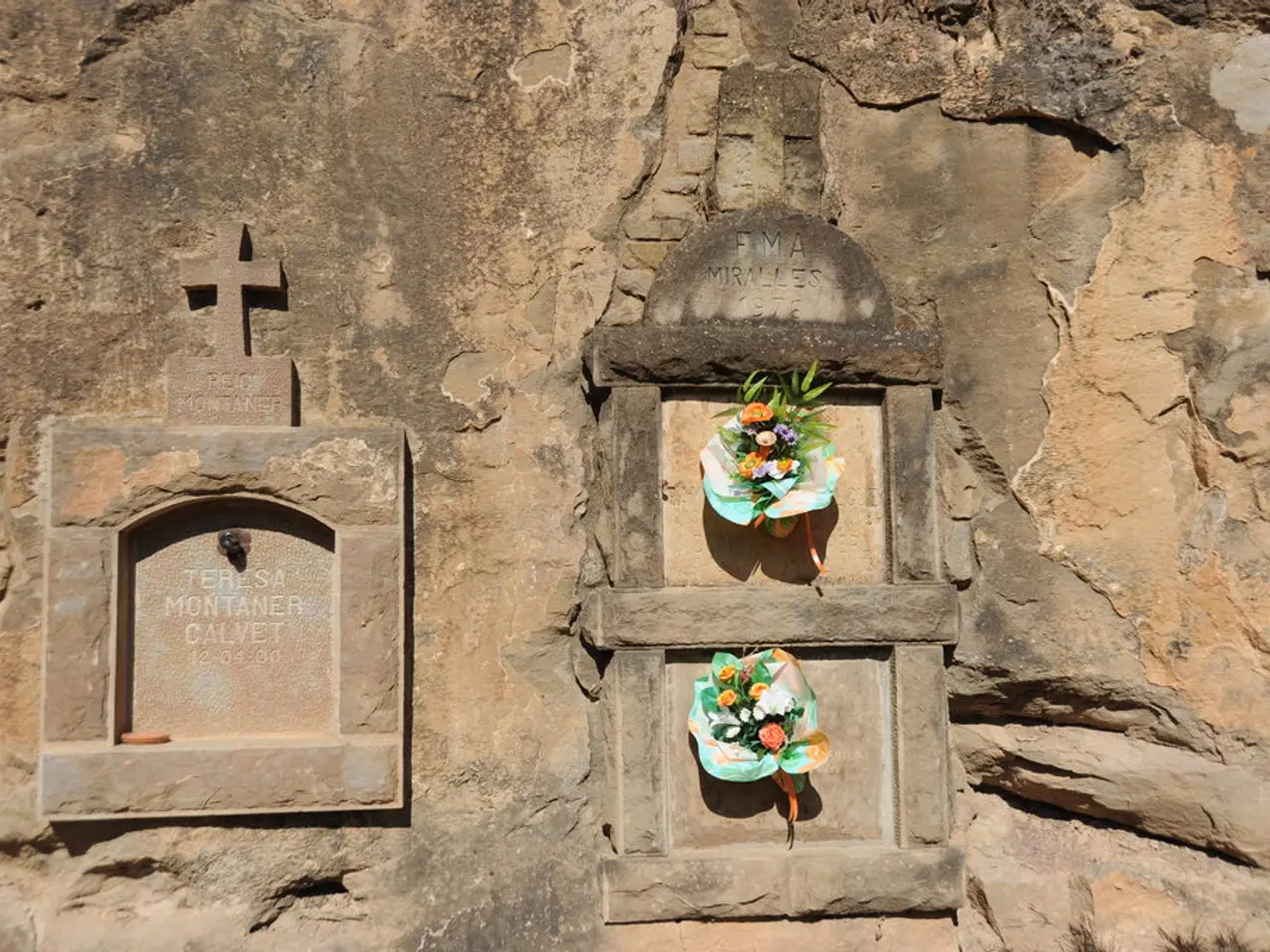Exploring the Abodes and Ghostly Influences of a Contemporary Holy Figure
Dorothy Day, a radical peace activist, mother, journalist, and co-founder of the Catholic Worker movement, left an indelible mark on New York City. Her legacy can still be felt in the places where she lived, worked, prayed, and organized, reflecting her lifelong dedication to hospitality, justice, and Catholic social teaching.
Central Locations of Dorothy Day's Activism
Union Square, St. Francis Xavier Church, and Washington Square Park were central to Dorothy Day’s activism and community work. Union Square and Washington Square Park were common gathering points for social and political action where Dorothy Day participated in protests and meetings focused on peace and justice. St. Francis Xavier Church, a Jesuit parish in Manhattan, likely played a spiritual role in her life, being part of the vibrant Catholic environment she engaged with during her work in the city.
Dorothy Day's Commitment to Prison Reform
The Women’s House of Detention in Manhattan was a site related to her interest in prison reform, advocacy for women in incarceration, and the destitute needing support. Dorothy Day was deeply concerned with justice for the marginalized, including prisoners and detainees. Tours are held at the site of the Women’s House of Detention, providing details about the prison and the famous and infamous women who spent time there.
Houses of Hospitality and Charity
St. Joseph's House and Maryhouse are specific places closely linked to Dorothy Day’s direct charitable work. Dorothy Day purchased St. Joseph’s House in 1967 as a hospitality house offering food and shelter. Maryhouse was where Dorothy Day lived and died; it served as a center for the Catholic Worker community’s hospitality efforts. These houses exemplify her rule of life centered on prayer, work, and community, and they continue to embody her spirit of serving the poor and homeless through daily acts like serving soup.
The Catholic Worker Movement
The Catholic Worker movement, co-founded by Dorothy Day, launched a network of houses of hospitality that feed and provide shelter for the poor. The movement still publishes the Catholic Worker newspaper for one penny. The exploration of Dorothy Day's locations aims to help listeners understand her as a complicated, flawed person and what it means to be a modern saint.
Legacy and Influence
Fr. James Martin, a Jesuit priest, often references Dorothy Day and her work. He helps continue her legacy by engaging contemporary audiences with stories of her life, spirituality, and activism. The Dorothy Day ferry, commissioned in 2022, takes thousands of people back and forth from Manhattan to Staten Island, symbolizing her lasting impact on New York and its communities.
The Golden Swan saloon, where Dorothy Day frequented a back room called "The Hell Hole," was a gathering place for intellectuals, writers, artists, gangsters, and thieves in the day. This working-class restaurant in New York City symbolizes the communities Dorothy Day immersed herself in and served.
In summary, these locations and associations map out the landscape where Dorothy Day lived, worked, prayed, and organized, reflecting her lifelong dedication to hospitality, justice, and Catholic social teaching in New York City. Visiting these sites provides a unique opportunity to understand the complex and inspiring life of Dorothy Day.
[1] Sources: [Link 1], [Link 2], [Link 3]
- Dorothy Day's activism was rooted in Union Square and Washington Square Park, where she participated in peace and justice protests, and St. Francis Xavier Church, a significant spiritual force in her life.
- The Women’s House of Detention, a site closely related to Dorothy Day’s advocacy for prison reform, serves as a testimonial to her lifelong commitment to justice for the marginalized, including prisoners and the destitute.




